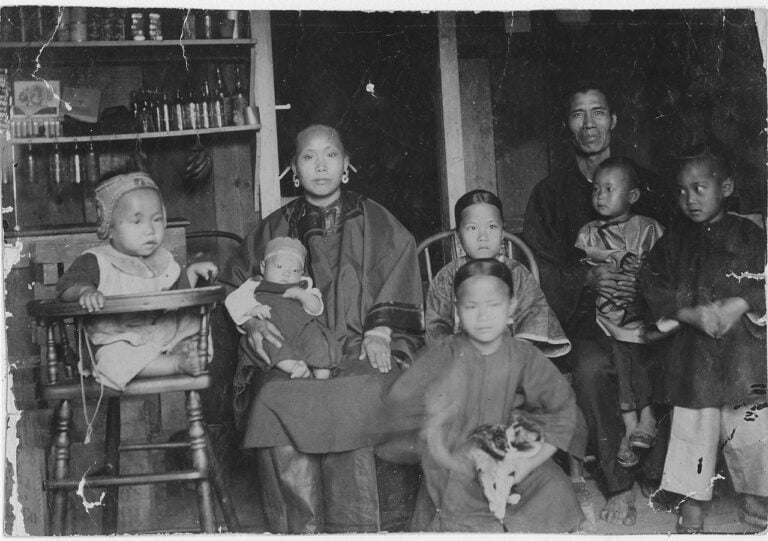The story of Chinese immigrants in America is one of difficulty, struggle, determination, and uniformity. Although a bargain of Chinese migration to the US has actually happened more just recently, it can be traced all the way back to the 1820s. This guide to investigating your Chinese origins will assist you gain an understanding of the history of this migration and discover techniques and complimentary resources for exploring your own household’s past.
A Beginner’s Guide to Chinese-American Genealogy
This short guide is separated into 3 parts– history of Chinese migration in the U.S., techniques to get you started with your research study and, lastly, genealogy sites and databases that offer (mainly) complimentary records for discovering your ancestors.
A Brief History of Chinese Migration to the U.S

. The earliest Chinese migration to the U.S. can be traced back to the advanced war period. Many Chinese migrants, and Hakkas from Guangdong Province under the Qing empire, concerned Hawaii with Captain James Cook.
In the mid-19th century, a considerable number of Chinese came to Hawaii to work on the sugar walking stick plantations. The state of Hawaii today holds a variety of records on Chinese immigration, particularly the passenger details of the early immigrants.
The first Chinese immigration wave to the mainland U.S. began in the 1820s– lots of were merchants or previous sailors. Moved by the mid-19th century California Gold Rush, and a desire to escape starvation and warfare brought on by the Taiping Rebellion, groups of Chinese laborers came to the U.S. for work in hopes of a better life.
Some did make a fortune out of hardship, sadly, numerous of them were subjected to indentured slavery and became understood as “coolie laborers.”
Numerous employees later on became used on the Pacific Railroad as well as in mining and laundry businesses. By 1882, one-third of the labor force in San Francisco was comprised of Chinese immigrants or their kids.
The atmosphere of the Jim Crow age and the fear of employment competitors stired racial stress in between white Americans and Chinese immigrants. Congress consequently passed the Chinese Exclusion Act in 1882 to ban Chinese immigration and to restrict naturalization of Chinese immigrants.
To implement the law, the government employed inspectors to examine Chinese workers in the states, hence developing extensive records and files on Chinese immigration which are now offered at the National Archives.
To even more perform the Exclusion Act, the U.S. government developed the Angel Island Immigration Station in the San Francisco Bay, where around 100,000 Chinese individuals were apprehended in between 1910 and 1940. Many Chinese people were deported back to China– some were even smuggled to Mexico and southward.
Chinese Genealogy Research, interview on Angel Island 1923
In 1943, in an effort to enhance the allied relationship with China during World War II, the Congress passed the Magnuson Act, which enabled Chinese immigrants already living in the country to become naturalized residents.
The end of the immigration ban (paired with the destructive effects of China’s Great Leap Forward policies in the 50s and the Cultural Revolution in the 60s) invited another rise of Chinese migration into the U.S
. The third wave of the Chinese migration came in the 1980s when the relationship between the U.S. and People’s Republic of China resumed at the end of the Cultural Revolution.
As of 2010, there were 4,948,000 people of Chinese descent living in the U.S. (according to census), comprising around 1.5% of the total population.
Keep this history in mind– as your forefather’s date of entry to the U.S. might figure out which files and files are best to look into.
Search Strategies for Finding Your Chinese Ancestors
Now, let’s enter the basics of genealogy research for your Chinese forefathers.
Like any genealogical research study, you must start your examination by gathering information from family. Ask moms and dads, grandparents, aunties, uncles and cousins about the names, dates of birth and deaths of relatives to trace your household lines. Family albums and written records of family members will likewise be really practical.
Write down the first names, surnames, and the approximate years of your ancestor’s remain in the U.S. Ask family members about prominent members of the family clan. Keep in mind the names (surname, maiden name) of parents, partners, siblings, children, and other loved ones including divorced members. Shop whatever in your ancestral tree program.
Essential records such as recognition cards and birth/death certificates are a great place to start. Divorce documents, home records, and migration records are likewise an excellent source of info.
If your forefather came to the U.S. or Hawaii before 1882 (and never left and reentered the U.S.) it might be tough to discover any files from immigration information. You may, nevertheless, be able to discover info about your forefather from ship records, such as traveler manifests.
If your ancestor concerned the US after 1882 or reentered the country after that time, you might be able to discover his/her info from various migration records.
Primarily Free Online Databases for Researching Your Chinese Ancestry
Berkeley library is an excellent location to start. This database includes Investigation Arrival Case Files from San Francisco and Hawaii. This searchable database is a good location to begin if your forefather got here during the Exclusion Era as it consists of INS files between 1884 and 1944.
Census records host a wealth of information for genealogy research. The most current census you can browse today is from 1940. Wish to know more? Check Out The Ultimate Quick Reference Guide to the U.S. Census for Genealogy.
U.S. Citizenship and Immigration Services branch of the Dept of Homeland Security (USCIS) offers services for searching for genealogical records. For a charge, you can ask for a copy of a record from the Naturalization Certificate Files (C-files) from 1906 to 1956, Alien Registration Forms from 1940 to 1944, Visa submits 1924 to 1944, Registry Files from 1929 to 1944, and Alien Files dated prior to May 1, 1951. Look here to learn more.
Hawaii State Archives Digital Collections allows you to browse most of the Passenger Manifests for ships pertaining to or from Hawaii in between 1843-1900. This database is especially beneficial for those ancestors who arrived in the U.S. before 1882.
The National Archives and Records Administration (NARA) holds Individual census records from 1790 to 1940s. This page lists all the migration info and historical context pertaining to Chinese immigration in the U.S. This is a terrific location to search for your forefathers that resided in the U.S. throughout the Exclusion Era.
Ancestry.com
You can browse the following records complimentary through Ancestry.com however accessing them will need a paid subscription. A 14 day totally free trial can be discovered here. Please keep in mind that we are an affiliate partner of Ancestry.com and might earn a cost if you choose to subscribe to their services after clicking on a link on this page.
U.S., Naturalization Records, 1840-1957
U.S., Chinese Immigration Case Files, 1883-1924
New York City, Index to Chinese Exclusion Case Files, 1898-1943
Hawaii, Index to Chinese Exclusion Case Files, 1903-1944
San Francisco, California, Chinese Passenger Arrivals and Disposition, 1903-1947
Portland, Oregon, Chinese Immigrant Landing Records and Applications for Admission, 1882-1903
California, Chinese Arrival Case Files Index, 1884-1940
The National Archives website also provides extra totally free details on researching your Chinese forefathers including an in-depth guide and helpful resources here.
Shanghai library might be the world’s largest database for browsing Chinese family tree. The library holds nearly 50,000 ancestral tree.
The page on Chinese genealogy provides valuable resources such as how to read a Chinese genealogy book. Here you will discover links to different subjects such as background details, various record types, and how to interpret particular records.
House of Chinn is an extremely beneficial website to get educated about Chinese genealogy. It supplies a comprehensive explanation consisting of background info, usage of unique terms, and historical details about names. It also provides newbie’s guides to researching family history in China. Once you are done with your search within the U.S., this outstanding guide will take you to the next step– finding details in mainland China.
Siyi Chinese Genealogy is an educational website for the genealogy of households from an area of Guangdong, China. This site has a list of genealogy sites featuring family trees of prominent Cantonese surnames in addition to information of the site owner’s journey of discovering her/his forefathers, which might provide some insight for your own search.
My China Roots is a paid service for tracing Chinese family tree. If you have enough in your budget and are tired of mining through stacks of details, you can utilize their services to learn more about your family history.
Besides tracing ancestry all the method to the villages of your forbearers in China, it will likewise connect you to the village and organize a journey for you to visit your forefather’s home.
Sheau-yueh J. Chao’s book In Search of Your Asian Roots: Genealogical Research on Chinese Surnames, consists of a concise genealogical analysis of more than 600 names and their variants. The book also introduces numerous helpful approaches to trace Chinese lineage and thorough info on Chinese genealogy research. Take a look at her very informative video discussion on how to conduct genealogical research study on Chinese origins and how she discovered her forefathers. The above link indicate the paid Google ebook, but you might have the ability to discover a regional repository that uses the title for free.

Leave a Reply